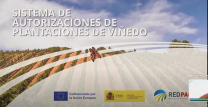Media library
Documentary, graphic and/or audiovisual knowledge objects are offered here, offering information on various sectors and topics. Use the keyword search or search filters to access current audiovisual and documentary knowledge objects useful for your implementation.
If you have any questions or suggestions, please contact us here.

Cost structure of the agricultural production guidelines of the Region of Murcia: nuts, pome fruit, vines, and olives
Publication dedicated to the most characteristic woody crops of rural Murcia, including nuts, pome fruit, table and wine grapes, and olive trees.
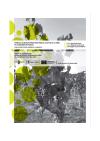
Manual of good practices for vine cultivation in the region of Murcia. Socioeconomic and environmental assessment
The manual aims to convey, in a direct and simple way, to winegrowers and technicians involved in the regional wine chain, sustainable cultivation guidelines, both for dryland bush-fed vines and for irrigated trellis vines.
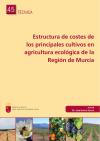
Cost structure of the main crops in organic farming in the Region of Murcia
Document describing the main guidelines for regional organic farming in Murcia
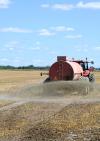
Meetings of the Working Group on Experimentation in Viticulture and Oenology
Compilation of research on Viticulture and Oenology from the Working Group
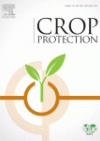
Protection of grapevine pruning wounds against Phaeomoniella chlamydospora and Diplodia seriata using commercial biological and chemical methods
Article about Botryosphaeria dieback and esca, two of the most damaging grapevine trunk diseases (VTB) affecting vineyards in major grape-producing areas around the world.

Digital droplet PCR technology for the detection of Ilyonectria liriodendri in environmental samples of grapevines
Article about the accurate, early, and specific detection and quantification of blackleg fungi and the evaluation of droplet digital PCR and real-time PCR techniques.
Report A3: Map of stakeholders for climate change adaptation in the vineyard and wine sector
The overall objective of the VIN & ADAPT II project was to promote knowledge transfer and mobilize all stakeholders to drive adaptation to the challenges posed by climate change in the wine sector.
Report A1 on climate change impacts and adaptation in target regions
The overall objective of the VIN & ADAPT II project was to promote knowledge transfer and mobilize all stakeholders to drive adaptation to the challenges posed by climate change in the wine sector.
Report A2: Industry perceptions of climate change and adaptation needs and opportunities
The overall objective of the VIN & ADAPT II project was to promote knowledge transfer and mobilize all stakeholders to drive adaptation to the challenges posed by climate change in the wine sector.
Effects and adaptation of the vineyard to climate change
Climate change is the other major uncertainty for the wine sector. Currently available climate projections indicate that if greenhouse gas emissions continue at their current rate, there could be rising temperatures and decreased rainfall in the Iberian Peninsula, along with an increase in extreme weather events such as droughts and heat waves.
Golden flavescence of grapevine and its vector Scaphoideus titanus Ball
Golden flavescence, in English “flavescence dorée of grapevine”, is a very serious and destructive disease that affects the vine. It is a disease of bacterial origin, being produced by the phytoplasma Candidatus Phytoplasma vitis, which needs to be transmitted by an almost specific vector called the vine cicada (Scaphoideus titanus Ball)
Guidelines for the biological control of the chestnut wasp
Recommendations for the release of Torymus sinensis, a biological control organism for the chestnut wasp
Fact sheet on Xilella fastidiosa
Who is Xilella, the fearsome plant killer?
Almond wasp
The almond wasp (Eurytoma amigdali E) is a hymenopteran recently discovered in almond orchards in the Valencian Community. The adults are black and emerge in spring from the fruit they parasitized the previous season.
Information note and management recommendations: thrips damage to citrus, persimmon, and pomegranate.
Given the damage caused by thrips observed since May on leaves and fruit in various citrus, persimmon and pomegranate crops and the confirmation of the presence of Scirtothrips aurantii Faure in certain areas, the following recommendations have been considered appropriate:
Recommendations for the strategy to control leaf necrosis in persimmons
During the 2019 campaign, control failures were detected in some plots in the Ribera Alta region (Alzira, Benimuslem, Guadassuar, and Massalavés). Systematic surveys carried out in 2020 revealed that the resistance of the fungus Plurivorosphaerella nawae to the QoI group of fungicides (strobilurins) was present in most persimmon-producing areas in the province of Valencia.
Scirtothrips aurantii, information note and management recommendations, damage caused by thrips in citrus, persimmon and pomegranate.
Given the damage caused by thrips observed since May on leaves and fruit in various citrus, persimmon and pomegranate crops and the confirmation of the presence of Scirtothrips aurantii Faure in certain areas, the following recommendations have been considered appropriate:




